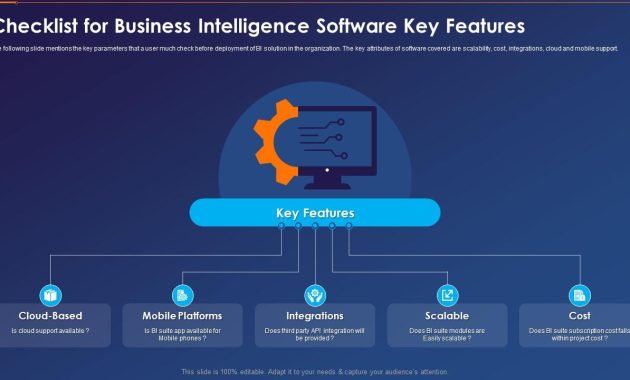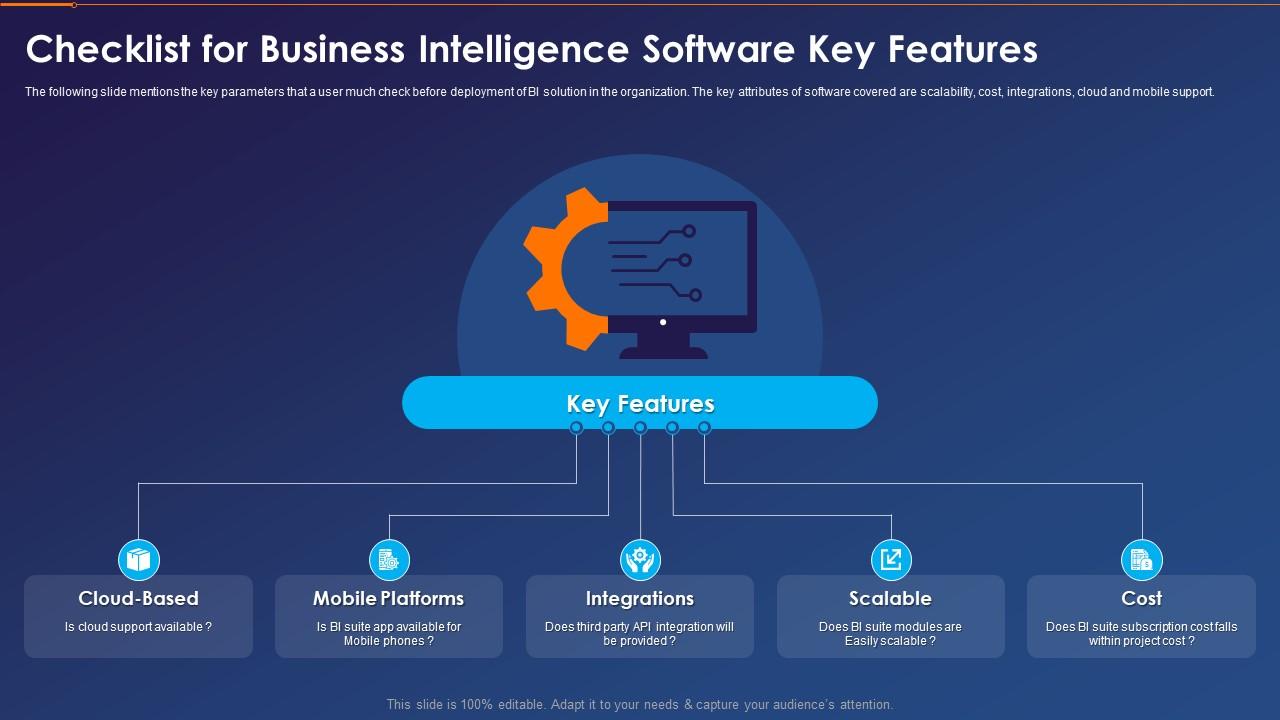
How to Transform Data with Business Intelligence Software Tools: A Comprehensive Guide
In today’s data-driven world, organizations are drowning in information. However, raw data alone is useless. The true power lies in transforming this data into actionable insights. This is where Business Intelligence (BI) software tools come into play. They empower businesses to analyze data, identify trends, and make informed decisions. This comprehensive guide explores how to leverage these tools for effective data transformation. We will delve into their capabilities, benefits, and best practices.
Understanding the Need for Data Transformation
Before diving into the tools, it’s crucial to understand why data transformation is essential. Data often comes in various formats. It may also reside in disparate systems. This makes it difficult to analyze and understand as is. Data transformation cleanses, structures, and integrates data. This process prepares it for meaningful analysis. It helps uncover patterns and insights that would otherwise remain hidden. Effective data transformation leads to better decision-making. It also improves operational efficiency.
Key Capabilities of Business Intelligence Software Tools
BI software tools offer a range of capabilities to facilitate data transformation. These include data extraction, data cleaning, data integration, and data visualization. Let’s examine each of these in more detail:
- Data Extraction: This involves pulling data from various sources. These sources can be databases, spreadsheets, or cloud applications. BI tools can connect to a wide array of data sources. This allows users to consolidate data from different systems into a single platform.
- Data Cleaning: Raw data often contains errors, inconsistencies, and missing values. Data cleaning addresses these issues. This process involves identifying and correcting these errors. It ensures data accuracy and reliability. Techniques include removing duplicates, standardizing formats, and handling missing data.
- Data Integration: This process combines data from multiple sources into a unified view. Data integration involves mapping and transforming data from different systems. This creates a consistent and coherent dataset. It allows for comprehensive analysis across the organization.
- Data Visualization: Once the data is transformed, BI tools enable users to visualize it through charts, graphs, and dashboards. Data visualization makes complex information easy to understand. It facilitates the identification of trends and patterns. This visualization supports better decision-making.
Popular Business Intelligence Software Tools
The market offers a plethora of BI software tools. Each tool caters to different needs and budgets. Some of the most popular tools include:
- Tableau: Known for its user-friendly interface and powerful data visualization capabilities. Tableau is a leader in the BI space. It provides interactive dashboards and reporting features.
- Microsoft Power BI: A versatile and cost-effective tool. Power BI integrates seamlessly with other Microsoft products. It offers robust data modeling and analysis features.
- Qlik Sense: A self-service BI platform with a focus on data discovery. Qlik Sense uses an associative data model. It allows users to explore data from multiple perspectives.
- Looker: A cloud-based BI platform. Looker focuses on data modeling and governance. It offers advanced analytics and reporting features.
Steps to Transform Data with BI Software Tools
The data transformation process typically involves several key steps. These steps ensure data is ready for analysis. Each step is critical for obtaining reliable insights. The process is as follows:
- Data Source Identification: Identify the data sources you need to analyze. Determine the location and format of the data. Understand the structure and content of each data source.
- Data Extraction: Extract data from the identified sources. Use the BI tool’s connectors to pull data. This may involve scheduling automated data extraction processes.
- Data Cleaning and Preparation: Cleanse and prepare the data for analysis. Address inconsistencies, errors, and missing values. Standardize data formats and ensure data accuracy.
- Data Transformation: Transform the data to meet analytical needs. This includes data aggregation, calculations, and transformations. Use the BI tool’s features to create new data fields.
- Data Loading: Load the transformed data into the BI tool’s data model. This makes the data available for analysis and reporting. Ensure data is loaded efficiently.
- Data Visualization and Analysis: Create visualizations and perform analysis. Use the BI tool’s features to explore the data. Build dashboards and reports to share insights.
These steps provide a structured approach to data transformation. This ensures the data is suitable for decision-making.
Benefits of Using Business Intelligence Software Tools
Implementing BI software tools offers numerous benefits. These benefits can significantly improve business performance. They can also lead to a competitive advantage. Some key benefits include:
- Improved Decision-Making: BI tools provide data-driven insights. This enables better and more informed decisions. This leads to a more strategic approach.
- Enhanced Operational Efficiency: By identifying inefficiencies, BI tools help streamline processes. This results in cost savings and improved productivity.
- Increased Revenue: BI tools help identify new opportunities. They can also improve sales and marketing effectiveness. This leads to increased revenue.
- Better Customer Understanding: BI tools provide insights into customer behavior. This enables businesses to better understand customer needs.
- Competitive Advantage: By leveraging data effectively, businesses gain a competitive edge. They can respond quickly to market changes. They can also make informed decisions.
Best Practices for Data Transformation
To maximize the effectiveness of data transformation, consider these best practices:
- Define Clear Objectives: Clearly define the goals of your data transformation efforts. Know what you want to achieve with your data.
- Choose the Right Tools: Select BI tools that meet your specific needs. Consider factors like ease of use and scalability. Also consider the cost.
- Ensure Data Quality: Prioritize data quality throughout the process. Implement data cleaning and validation procedures.
- Automate Processes: Automate repetitive data transformation tasks. This saves time and reduces errors.
- Provide Training: Train your team on how to use BI tools effectively. This ensures they can extract maximum value from the data.
- Establish Data Governance: Implement data governance policies to ensure data accuracy and consistency. This protects the data.
- Regularly Review and Refine: Continuously review and refine your data transformation processes. Adapt to changing business needs.
Real-World Examples of Data Transformation Success
Many organizations have achieved remarkable results. They have transformed their data. They have also used BI software tools. Here are a few examples:
- Retail: A major retailer used BI tools to analyze sales data. They optimized their inventory management. This reduced waste and increased profits.
- Healthcare: A hospital used BI tools to analyze patient data. They improved patient outcomes and reduced costs.
- Manufacturing: A manufacturer used BI tools to analyze production data. They improved efficiency and reduced downtime.
These examples demonstrate the power of data transformation. They highlight the value of BI software tools.
The Future of Data Transformation
The future of data transformation is bright. Several trends are shaping the landscape. These include:
- Artificial Intelligence (AI) and Machine Learning (ML): AI and ML are being integrated into BI tools. These tools automate data transformation processes. They also provide advanced analytics capabilities.
- Cloud-Based BI: Cloud-based BI platforms are becoming increasingly popular. They offer scalability and flexibility. They also provide cost-effectiveness.
- Self-Service BI: Self-service BI tools empower business users. They can analyze data without IT support.
- Data Governance and Privacy: Data governance and privacy are becoming increasingly important. BI tools are adapting to meet these needs.
These trends will continue to drive innovation. They will also transform the way businesses use data. They will further enhance the capabilities of business intelligence software tools. The ability to effectively use business intelligence software tools will become even more critical. Businesses that embrace these changes will be well-positioned to succeed. They will also make the most of their data.
Conclusion: Harnessing the Power of Data Transformation
Business intelligence software tools are essential for transforming raw data. They convert the data into actionable insights. By leveraging these tools, organizations can make better decisions. They can also drive operational efficiency. This guide has provided a comprehensive overview. It has explained the capabilities, benefits, and best practices. The ability to effectively use business intelligence software tools is a key skill. It is critical in today’s data-driven world. Embrace data transformation. Unlock the full potential of your data. Make sure you choose the right business intelligence software tools. This will help you achieve your business goals.
The journey of data transformation may seem complex. The benefits are well worth the effort. Investing in business intelligence software tools is a strategic move. It is an investment in your organization’s future.
In conclusion, how to transform data with business intelligence software tools is a crucial skill. It is vital for any organization. It wants to thrive in the modern business environment. By understanding the tools and techniques, you can unlock valuable insights. This will drive success and innovation.
Remember to identify the best business intelligence software tools for your specific needs. Use them to transform your data effectively. Ensure a successful data transformation journey.
By using the right business intelligence software tools, you can transform your data. You can unlock the potential of your data. You can also make informed decisions.
Consider these factors when choosing your business intelligence software tools. These factors will ensure you choose the right one. This will lead to success.
[See also: Understanding Data Warehousing for Business Intelligence]
[See also: Choosing the Right BI Tool for Your Business]
[See also: Data Visualization Best Practices]

